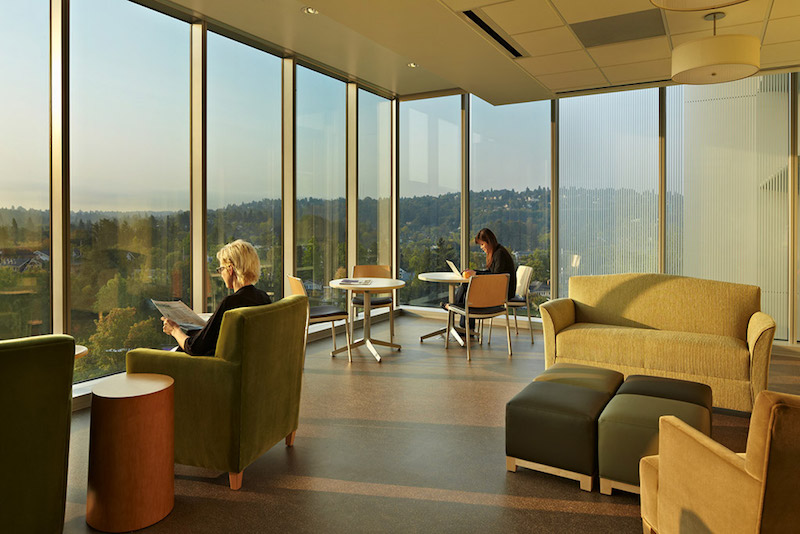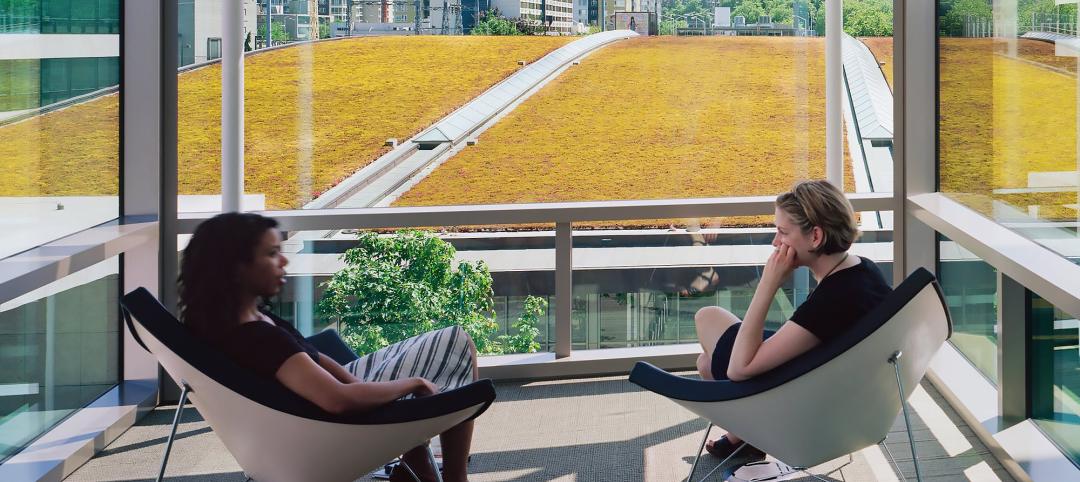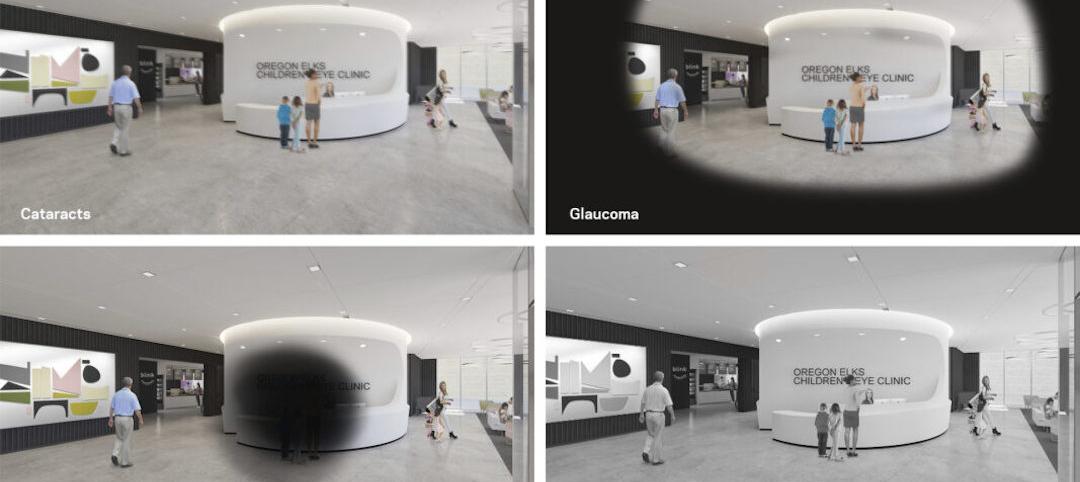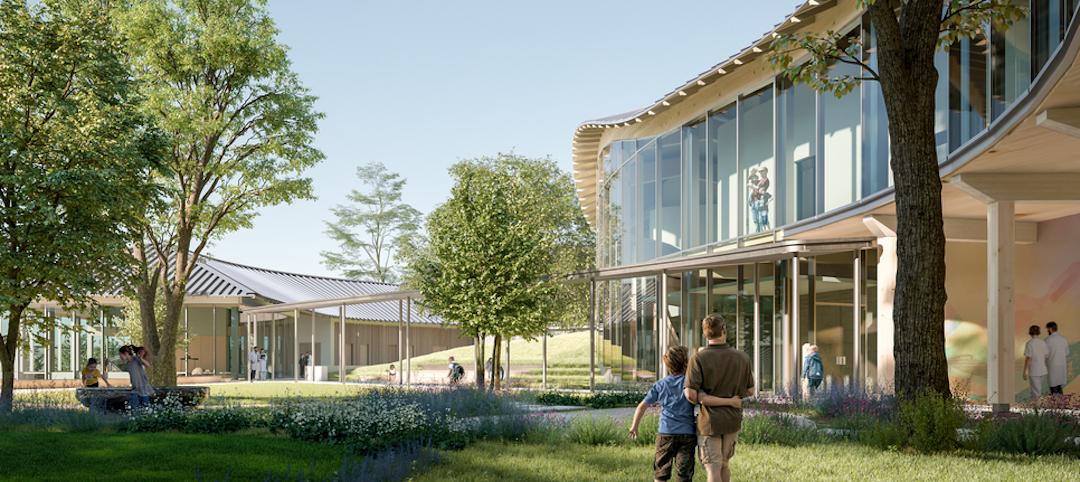Millions of dedicated clinicians and medical professionals work in hospitals and clinics around the world. Unfortunately some of these employees experience long hours, occupational injuries and stress due to the nature of their work. Not surprisingly, in a survey of the most stressful jobs, RNs, surgeons, social workers and emergency dispatchers all placed in the top 10.
As a result, many healthcare organizations are increasingly focused on designing amenities, policies, and workplaces to better support their clinicians, health providers, and administrators. Interestingly, healthcare facilities — academic medical centers in particular — are wrestling with similar issues as corporate workplaces. Both seek to increase productivity, collaboration and work-life balance, and an improved workplace environment can help facilitate these goals.
Here are a few of the unique needs clinicians and other medical professionals face and the ways new workplaces — and specifically workplace amenities — have the potential to help:
Variety
A day in the life of a medical professional is varied and filled with physical movement — from reviewing patients, sitting with colleagues and teaching, to hands-on work interrupted by ringing pagers. Amidst this controlled chaos, doctors and clinicians also need places to wrap up emails and consult with colleagues. In terms of physical space for medical professionals, it’s about balance: finding the right ratio of shared spaces to individual workspaces to support spaces. It can also be about smart spaces that support improved processes and workflows.
Privacy
Patient privacy rules require healthcare workplaces to keep information confidential and discussed verbally only in a secure environment. Yet clinicians, clinical faculty and medical professionals also need privacy to decompress and, sometimes, to grieve the loss of a patient. As in corporate workplaces, allocating a range of quiet workspaces — from private offices to individual workstations to phone spaces — is key. While traditionally healthcare facilities feature more private offices than most corporate workspaces, some academic medical centers are experimenting with an unusual office approach, with as little as 60% individual workspaces and as much as 40% shared spaces.
Respite
Many clinicians and medical professionals, especially those in palliative care, have difficult jobs supporting sick patients and their families. The workplace must give them the space to think, grieve and recuperate, and thus help prevent physician burnout. Amenities that are now commonly found on corporate tech campuses providing visual and acoustic privacy — retreat spaces, yoga rooms, support lounges and soothing gardens — can help bring calmness to a clinician’s or medical professional’s day. In Seattle, the University of Washington Montlake Tower features a room for exercising and relaxing with views of Mount Rainier and the Montlake Cut. On the east coast, Brigham and Women’s Hospital has a dedicated garden for staff, while at Massachusetts General Hospital, the surgical floors have access to daylight, which helps energize surgical teams who may spend long hours in the OR.
Community
Team-based medicine requires opportunities for group communication, and just like corporate office workers, clinicians and medical staff also need places to build community and celebrate events like birthdays and the lives of patients who recover as well as those who pass away. These can include home-like areas for gathering, welcoming visitors and sharing meals, which often facilitate social support. Yet areas for engagement and community-building are not just limited to indoors — the health care and insurance provider Kaiser Permanente is hosting farmers’ markets across the U.S. outside of their health centers and clinics.
Collaboration
Finding creative, flexible ways to encourage knowledge-sharing and idea-generation is essential to improving patient care. In a healthcare setting, this can mean trading private offices for shared space. For clinicians, it’s about providing shared spaces large and small that help ease the workday transition from clinical to office to community space. Departmental organization matters, too: at the OhioHealth Riverside Methodist Hospital Neuroscience Center in Columbus, Ohio, neuroscience, heart and vascular clinicians work together in one building, fostering an interdisciplinary approach to improve neuroscience patients’ experiences. In Boston, the newest medical technology at Massachusetts General Hospital syncs to smartphones so clinicians and nurses can communicate more easily, quickly and quietly.
The most successful amenities are not just “nice-to-haves” but crucial elements that make life better, easier and more joyous. The benefits are many, for employers — workforce recruitment, engagement and satisfaction — and for employees — stress-relief, refuge, privacy and emotional support — alike. In a healthcare setting, the lives of patients, loved ones and colleagues depend on facilities that support both the functional and emotional needs of clinicians, medical professionals and caregivers.
More from Author
NBBJ | Oct 3, 2024
4 ways AI impacts building design beyond dramatic imagery
Kristen Forward, Design Technology Futures Leader, NBBJ, shows four ways the firm is using AI to generate value for its clients.
NBBJ | Jun 13, 2024
4 ways to transform old buildings into modern assets
As cities grow, their office inventories remain largely stagnant. Yet despite changes to the market—including the impact of hybrid work—opportunities still exist. Enter: “Midlife Metamorphosis.”
NBBJ | May 10, 2024
Nature as the city: Why it’s time for a new framework to guide development
NBBJ leaders Jonathan Ward and Margaret Montgomery explore five inspirational ideas they are actively integrating into projects to ensure more healthy, natural cities.
NBBJ | Oct 18, 2023
6 ways to integrate nature into the workplace
Integrating nature into the workplace is critical to the well-being of employees, teams and organizations. Yet despite its many benefits, incorporating nature in the built environment remains a challenge.
NBBJ | May 8, 2023
3 ways computational tools empower better decision-making
NBBJ explores three opportunities for the use of computational tools in urban planning projects.
NBBJ | Jan 17, 2023
Why the auto industry is key to designing healthier, more comfortable buildings
Peter Alspach of NBBJ shares how workplaces can benefit from a few automotive industry techniques.
NBBJ | Aug 4, 2022
To reduce disease and fight climate change, design buildings that breathe
Healthy air quality in buildings improves cognitive function and combats the spread of disease, but its implications for carbon reduction are perhaps the most important benefit.
NBBJ | Feb 11, 2022
How computer simulations of vision loss create more empathetic buildings for the visually impaired
Here is a look at four challenges identified from our research and how the design responds accordingly.
NBBJ | Jan 7, 2022
Supporting hope and healing
Five research-driven design strategies for pediatric behavioral health environments.
NBBJ | Nov 23, 2021
Why vertical hospitals might be the next frontier in healthcare design
In this article, we’ll explore the opportunities and challenges of high-rise hospital design, as well as the main ideas and themes we considered when designing the new medical facility for the heart of London.
















